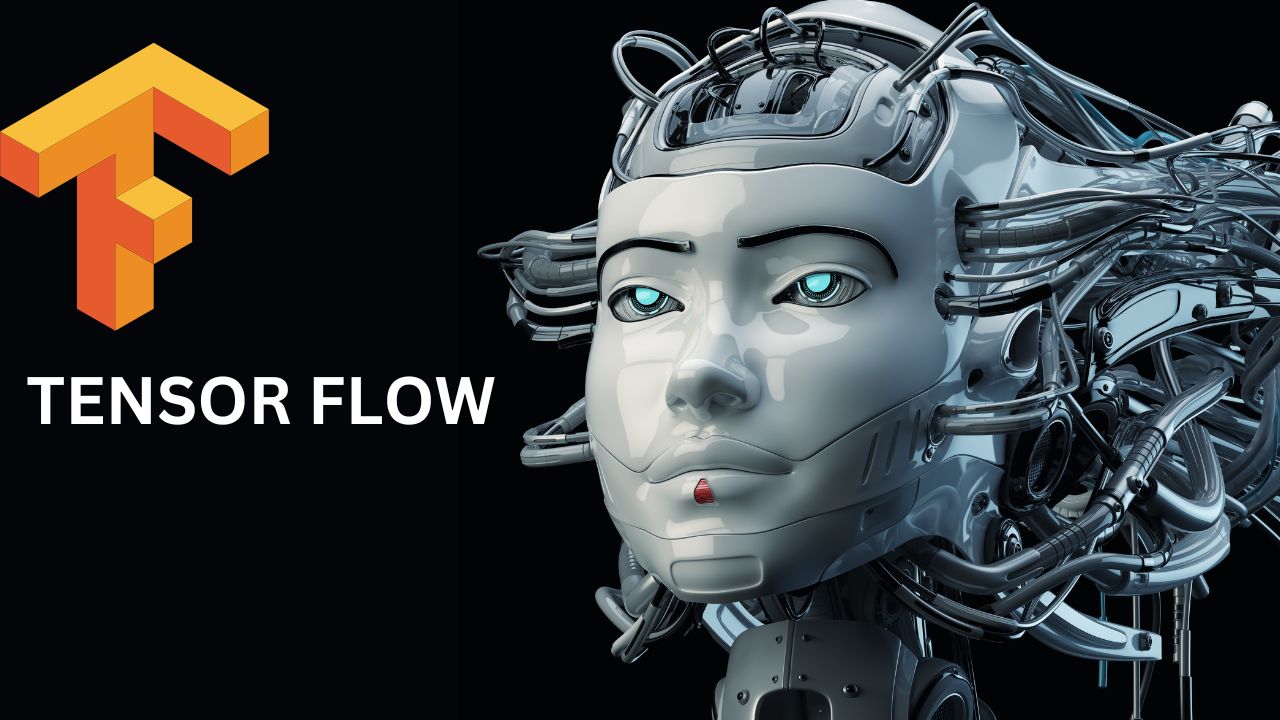
TensorFlow is a powerful open-source library developed by Google for machine learning and artificial intelligence. But what makes TensorFlow so special? It allows developers to create complex neural networks with ease, making it a favorite among data scientists and AI enthusiasts. From image recognition to natural language processing, TensorFlow's versatility is unmatched. Imagine building a model that can predict stock prices or even diagnose diseases from medical images. TensorFlow makes these advanced tasks accessible. Whether you're a beginner or a seasoned pro, understanding TensorFlow can open doors to endless possibilities in the tech world. Ready to dive into some amazing facts about TensorFlow? Let's get started!
Key Takeaways:
- TensorFlow is a popular open-source machine learning framework developed by Google. It's used in various industries, from healthcare to entertainment, and is expanding into edge computing and quantum machine learning.
- With TensorFlow, developers can build and train machine learning models for image and voice recognition, recommendation systems, autonomous vehicles, and healthcare. Its future includes improvements in usability, energy efficiency, and support for quantum computing.
What is TensorFlow?
TensorFlow is an open-source machine learning framework developed by Google. It helps developers build and train machine learning models. Here are some fascinating facts about TensorFlow.
-
TensorFlow Origin: TensorFlow was created by the Google Brain team and released in 2015. It evolved from DistBelief, an earlier machine learning system.
-
Open Source: TensorFlow is open-source, meaning anyone can use, modify, and distribute it. This has led to a large community of developers contributing to its growth.
-
Versatility: TensorFlow supports various machine learning tasks, including deep learning, neural networks, and natural language processing.
-
Cross-Platform: TensorFlow can run on multiple platforms, including desktops, servers, mobile devices, and even web browsers.
-
TensorFlow Lite: TensorFlow Lite is a lightweight version designed for mobile and embedded devices. It allows machine learning models to run efficiently on smartphones and IoT devices.
TensorFlow's Popularity and Usage
TensorFlow has gained immense popularity in the tech world. Let's explore some reasons behind its widespread use.
-
Wide Adoption: Many tech giants, including Google, Airbnb, and Uber, use TensorFlow for their machine learning needs.
-
Community Support: TensorFlow has a vast and active community. Developers can find numerous tutorials, forums, and resources to help them learn and troubleshoot.
-
Educational Resources: Google provides extensive documentation, tutorials, and courses to help beginners and experts alike learn TensorFlow.
-
Research and Development: TensorFlow is widely used in academic research. Many research papers and projects leverage TensorFlow for their machine learning experiments.
-
Industry Applications: TensorFlow is used in various industries, including healthcare, finance, and entertainment, to build predictive models and automate tasks.
TensorFlow's Technical Features
TensorFlow boasts several technical features that make it a powerful tool for machine learning. Here are some key aspects.
-
Graph Computation: TensorFlow uses data flow graphs to represent computations. This allows for efficient execution and optimization.
-
Eager Execution: Eager Execution is an imperative programming environment in TensorFlow. It allows operations to be executed immediately, making debugging and prototyping easier.
-
Keras Integration: TensorFlow integrates with Keras, a high-level neural networks API. This simplifies the process of building and training models.
-
TensorBoard: TensorBoard is a visualization tool in TensorFlow. It helps developers understand and debug their models by providing visual insights into the training process.
-
AutoML: TensorFlow AutoML enables developers to automate the process of building machine learning models. It helps in selecting the best model architecture and hyperparameters.
TensorFlow in Real-World Applications
TensorFlow's capabilities extend to real-world applications. Here are some examples of how it's being used.
-
Image Recognition: TensorFlow powers image recognition systems in various applications, from social media platforms to medical imaging.
-
Voice Recognition: Many voice assistants, like Google Assistant, use TensorFlow for speech recognition and natural language processing.
-
Recommendation Systems: Streaming services like Netflix and Spotify use TensorFlow to build recommendation systems that suggest content to users.
-
Autonomous Vehicles: TensorFlow is used in the development of self-driving cars. It helps in object detection, lane detection, and decision-making processes.
-
Healthcare: TensorFlow aids in diagnosing diseases, predicting patient outcomes, and personalizing treatment plans.
Future of TensorFlow
TensorFlow continues to evolve, with new features and improvements being added regularly. Here are some trends and future directions.
-
TensorFlow 2.0: TensorFlow 2.0 introduced significant changes, including better integration with Keras, improved usability, and eager execution by default.
-
Edge Computing: TensorFlow is expanding its capabilities to support edge computing, enabling machine learning on devices with limited resources.
-
Quantum Computing: TensorFlow Quantum is an extension that allows developers to build and train quantum machine learning models.
-
Federated Learning: TensorFlow Federated enables decentralized machine learning, allowing models to be trained across multiple devices without sharing data.
-
Sustainability: Google is working on making TensorFlow more energy-efficient, reducing the environmental impact of training large machine learning models.
Final Thoughts on TensorFlow
TensorFlow has revolutionized the world of machine learning and artificial intelligence. Its open-source nature, flexibility, and robust community support make it a go-to tool for developers and researchers alike. From powering Google's search algorithms to enabling groundbreaking research in healthcare, TensorFlow's impact is undeniable. Whether you're a seasoned data scientist or a curious beginner, diving into TensorFlow can open up a world of possibilities. Its extensive libraries and tools simplify complex tasks, making advanced machine learning accessible to everyone. So, if you're looking to enhance your projects with cutting-edge AI, TensorFlow is worth exploring. With continuous updates and a growing ecosystem, it's clear that TensorFlow will remain a cornerstone in the AI landscape for years to come. Happy coding!
Frequently Asked Questions
Was this page helpful?
Our commitment to delivering trustworthy and engaging content is at the heart of what we do. Each fact on our site is contributed by real users like you, bringing a wealth of diverse insights and information. To ensure the highest standards of accuracy and reliability, our dedicated editors meticulously review each submission. This process guarantees that the facts we share are not only fascinating but also credible. Trust in our commitment to quality and authenticity as you explore and learn with us.


